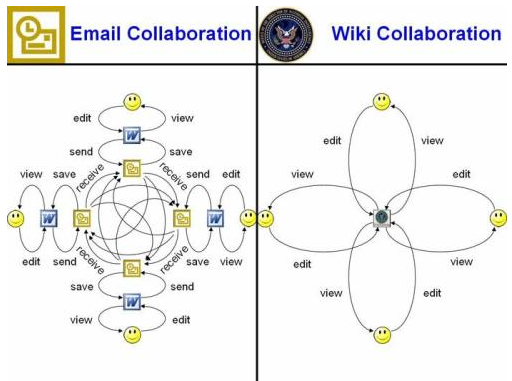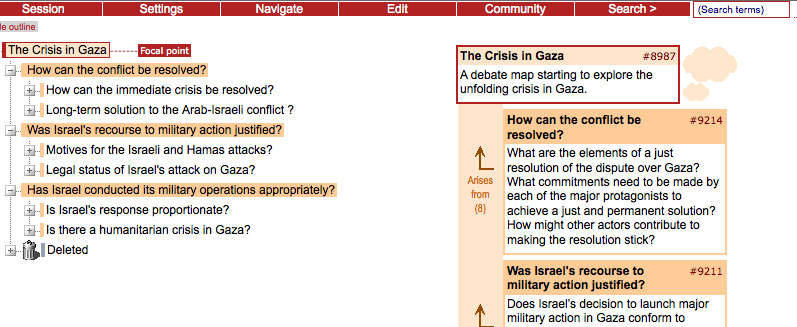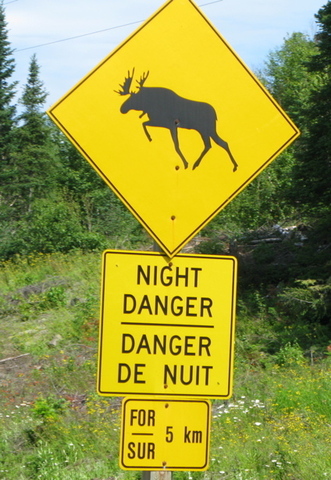Thanks to Peter O I came across Clay Shirky’s excellent analysis of what’s going on with newspapers and the web, Newspapers and Thinking the Unthinkable . Some of the salient points:
- Change has been so rapid that it has changed who is pragmatic and who is a fabulist. Newspapers are in denial about the realities of online content so those who describe what is happening (the pragmatists) are treated as fabulists.
Revolutions create a curious inversion of perception. In ordinary times, people who do no more than describe the world around them are seen as pragmatists, while those who imagine fabulous alternative futures are viewed as radicals. The last couple of decades haven’t been ordinary, however. Inside the papers, the pragmatists were the ones simply looking out the window and noticing that the real world was increasingly resembling the unthinkable scenario. These people were treated as if they were barking mad. Meanwhile the people spinning visions of popular walled gardens and enthusiastic micropayment adoption, visions unsupported by reality, were regarded not as charlatans but saviors.
When reality is labeled unthinkable, it creates a kind of sickness in an industry.
- The economics of publishing have changed. It used to be that there was a tremendous upfront cost to set up a newspaper or broadcasting facility. Now the infrastructure of distribution is paid for by all so publishing is cheap.
With the old economics destroyed, organizational forms perfected for industrial production have to be replaced with structures optimized for digital data. It makes increasingly less sense even to talk about a publishing industry, because the core problem publishing solves — the incredible difficulty, complexity, and expense of making something available to the public — has stopped being a problem.
- It is easy to describe life before or after an epochal shift. It is hard to describe the chaos of experiments during the shift. Shirky looks to The Printing Press as an Agent of Change as an example of the hard type of history.
What Eisenstein focused on, though, was how many historians ignored the transition from one era to the other. To describe the world before or after the spread of print was child’s play; those dates were safely distanced from upheaval. But what was happening in 1500? The hard question Eisenstein’s book asks is “How did we get from the world before the printing press to the world after it? What was the revolution itself like?â€
- Advertisers don’t want to pay for the costs of a full-featured newspaper (with international bureaus and investigative reporting.) They will move their money to where it connects with their (usually local) audience.
The competition-deflecting effects of printing cost got destroyed by the internet, where everyone pays for the infrastructure, and then everyone gets to use it. And when Wal-Mart, and the local Maytag dealer, and the law firm hiring a secretary, and that kid down the block selling his bike, were all able to use that infrastructure to get out of their old relationship with the publisher, they did. They’d never really signed up to fund the Baghdad bureau anyway.
- Newspaper reporting provides a public service that will be missed, but knowing we will miss it doesn’t save it. We just don’t know how to fill the gap that will be left when daily papers dissappear in cities.
“You’re gonna miss us when we’re gone!†has never been much of a business model. So who covers all that news if some significant fraction of the currently employed newspaper people lose their jobs?
I don’t know. Nobody knows. We’re collectively living through 1500, when it’s easier to see what’s broken than what will replace it.
Actually I think there are ideas floating around as to what might fill the gap:
- Blogs may take up some of the slack with various advocacy groups and NGOs providing investigative reporting in the areas that concern them. I think it is wrong to assume that amateurs will necessarily do a worse job than professional reporters. In fact, as most know, professionals are too busy to usually go into depth and whenever they write about something you know they get it wrong in all sorts of ways. A blog like Buckets of Grewal probably does a more indepth job of examining the Grewal controversy than any newspaper story. The difference is rather that the professionals are committed to breadth and they write better.
- Publicly funded broadcasters like the BBC and the CBC will provide tax funded news reporting with foreign bureaus and so on. They don’t have to have make a profit and can invest in things perceived as useful for society.
- There will always be some big and international newspapers like the New York Times or Reuters because there will always be a demand for that sort of news. The internet reduces diversity – every city doesn’t need a newspaper with a foreign bureau. All we need is a couple of news services with foreign bureaus.
- Some companies have already figured out how to package news as analysis and get other businesses to pay for it. This will accelerate as newspapers fail. Companies like Oxford Analytica will meet the demand of multinational businesses who need access to strategic information. The sooner the newspapers fail the sooner we will see these companies come out of the woodwork and start selling their products to us.
To conclude with another quote from the Shirky essay, “Society doesn’t need newspapers. What we need is journalism.”




